There are many good reasons to work out in the morning. In addition to the benefits exercise provides anytime, early workouts are associated with increased alertness, better focus, and a boost in overall daily activity — plus the boon of fewer of the distractions that might derail you later in the day.
Despite this long list of benefits, morning workouts have never really been my jam. I’ve done them, grudgingly. Running, yoga, strength training, high-intensity interval training — you name it, I’ve shoehorned it into my day before the sun is even up, breaking a sweat during those liminal hours between night and true morning.
For years, I forced it. Until one day, my body had had enough. It hurt to get up in the morning. My mood, focus, and energy suffered. It became harder to recover. I wanted — nay, needed — to sleep.
The early days of the pandemic made the transition easy; I was working and working out at home, and I was able to explore what time felt best to move my body. Lunchtime workouts, it turned out, were what I relished most. Moving my body in the middle of the day, before lunch, hit on a sweet spot of energy and interest in exercise.
I rode this wave for three years until, recently, I found my energy and interest shifting. Waning. I tried forcing my habitual midday workout routine, just as I did with morning exercise all those years ago. And again, the shoehorn approach began to mess with my energy, mood, and recovery.
When I opened myself to shifting my schedule again, the renewed possibility of morning workouts bubbled up in my mind.
Not the long, hard workouts of years past, though. What felt good and right was a routine that I could do at home, in my pajamas, before eating breakfast or even drinking coffee. Something that could be nestled into my morning routine between feeding the cats and doing my skincare. Habit-stacking rather than shoehorning.
I began to explore movements, drawing from my experience with yoga, kettlebell training, and neurobics — brain-stimulating exercises that support coordination, balance, and focus (see “The Neurobic Workout“). What I settled on is a routine that takes about 15 minutes and warms my body and brain, reconnecting me to the waking world.
I’m sharing it here not because it’s the “ultimate” or “best” morning movement routine — and not even because I think anyone necessarily needs such a regimen. I’m sharing it because I think it might inspire someone to examine where they are forcing and shoehorning — and imagine where it might be possible to move with more ease.
This routine isn’t a formal workout, so adjust it to suit yourself. I prefer using a light-for-me weight (12 kg or 25 lb.) so I never feel overtaxed. And my sets and reps vary from day to day. I usually like to do two sets of eight reps, though sometimes I’ll do just one set, or 10 reps, or five. I let intuition be my guide.
Contralateral Forward–Backward March
- Stand tall with your left foot forward and on the ball of your right foot on the floor behind you. Position your right arm slightly forward, your left arm slightly back, and both elbows bent 90 degrees.
- Take two powerful steps forward, switching your arms with each step.
- Begin to take a third step, reversing your arms again, and this time drive your right knee upward as high as possible. Pause for a moment, then perform the entire sequence walking backward, one step at a time, until you return to the starting position.
- Repeat for eight reps, then repeat the entire sequence starting with your right foot forward.
Upper-Lower Figure Eights (Ipsilateral)
- Balance on your right foot and lift your left knee into the air until your left thigh is parallel to the floor.
- Extend your left arm in front of you.
- Simultaneously draw figure eight in the air with your left foot and left hand.
- Perform eight reps, then repeat the move using your right foot and right hand.
Upper-Lower Figure Eights (Contralateral)
- Balance on your right foot and lift your left knee into the air until your left thigh is parallel to the floor.
- Extend your right arm in front of you.
- Simultaneously draw figure eights in the air with your left foot and right hand.
- Perform eight reps, then repeat the move using your right foot and left hand
Single-Arm Kettlebell March
- Stand with your feet about hip width apart and hold a kettlebell in one hand at your side.
- Keeping your chest proud, core braced, and shoulders squared over your hips, shift your weight onto one foot while you raise the other with control. Draw the raised knee up to hip height. Don’t let your body sway.
- Lower that foot with control and repeat with the opposite leg.
- Repeat for eight reps per side.
- Next, rack the kettlebell at shoulder height. Do eight reps per side.
- Then, press the kettlebell overhead. Do eight reps per side.
- Repeat the sequence with the kettlebell in the opposite hand: first at your side, then racked at your shoulder, then overhead.
Side-Plank March
- Lie on your right side and prop yourself up on that forearm, stacking your shoulder over your elbow. Press through that arm to keep your shoulder away from your ear and maintain a long neck.
- Extend your legs, staggering your feet so they are both on the floor. Position the left foot in front of the right foot.
- Press through your base arm and feet and raise your body off the floor. Engage through your core and the muscles of your base arm and legs, keeping your hips elevated.
- Draw one knee up toward your chest, balancing on your forearm and the other foot.
- Replace the raised foot on the floor and draw the other knee toward your chest.
- Continue marching in this manner, alternating sides to complete eight reps per side.
- Repeat on the opposite side.
Arm Bar With Eye-Tracking and Side-Lying Press
- Lie on your back with a kettlebell grasped in one hand and pressed straight over your chest. Extend the opposite arm straight out on the floor to your side.
- Keeping the top arm pressing to the ceiling and that shoulder engaged, roll toward the arm on the floor until you are lying on your side. Stack your hips and shoulders while maintaining a neutral neck position. Flex your feet and raise the top leg to engage the hip.
- Holding this position, fix your gaze on your bottom hand. With control, gently turn your head to look at your top hand. Gently turn your head again to lower your gaze to the bottom hand again. Allow your neck to stay relaxed.
- Continue turning your head from side to side for a total of eight reps.
- Then, lower the top leg and bend both knees, again ensuring that your hips and shoulders are stacked.
- Bend your elbow to lower your upper arm toward your side, slightly behind your body. Keep your forearm straight and perpendicular to the ceiling.
- Press the weight to fully extend your arm toward the ceiling.
- Perform eight reps.
- Come out of the exercise by rolling onto your back and lowering the weight completely before switching sides.
- Repeat the sequence on the opposite side.
Dead Bug Rock
- Assume the start of a dead bug position: Lie on your back and lift your arms and legs into the air. Your arms will be straight over your chest, knees bent about 90 degrees. Optional: Put one small resistance band around your forearms and one just above your knees.
- Engage your core, drawing your ribs down, and shift your weight to the right. Keep your head on the floor, your neck in a neutral position.
- Maintaining the dead bug alignment, rock your body as far to the right as you can. Slowly rock back through center and to the left, rocking as far to the left as you can.
- Rock back and forth with control for 10 reps per side.
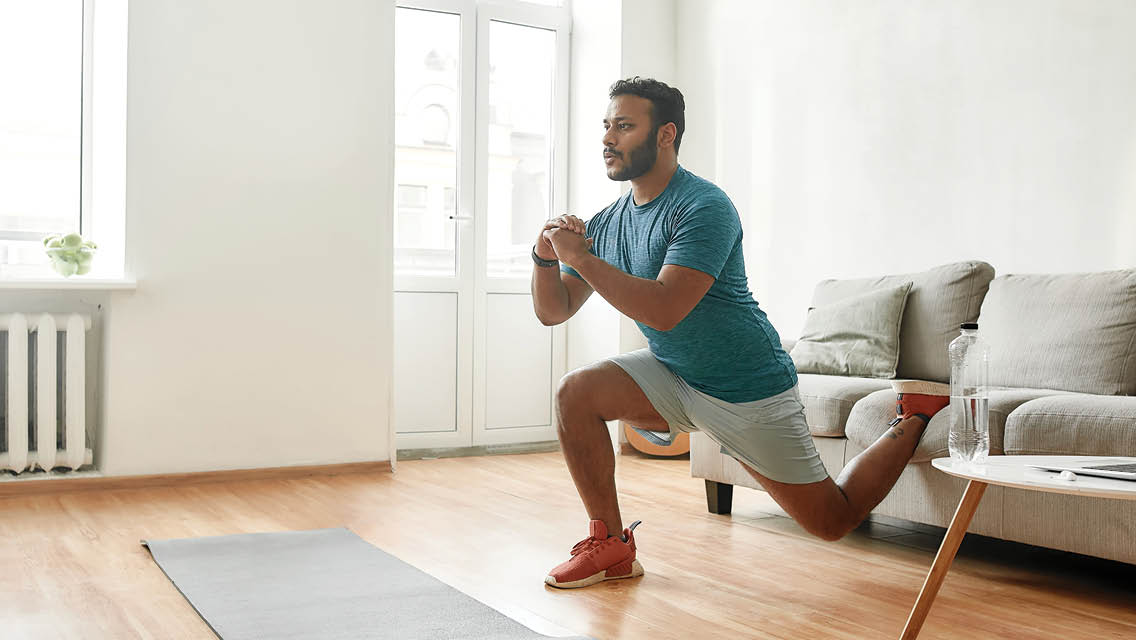

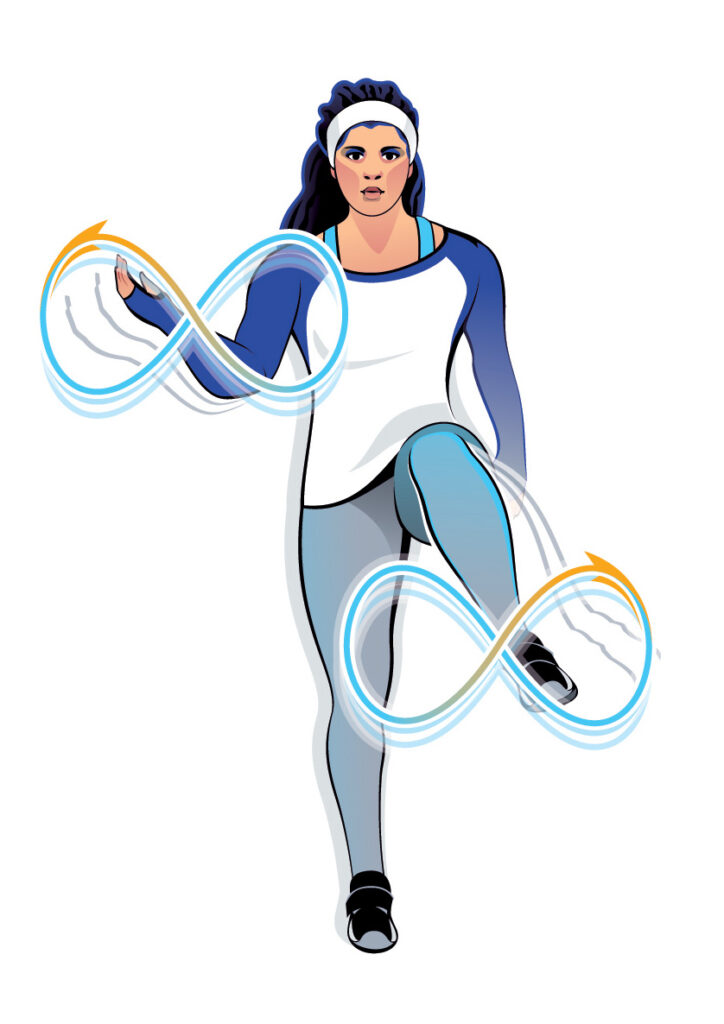
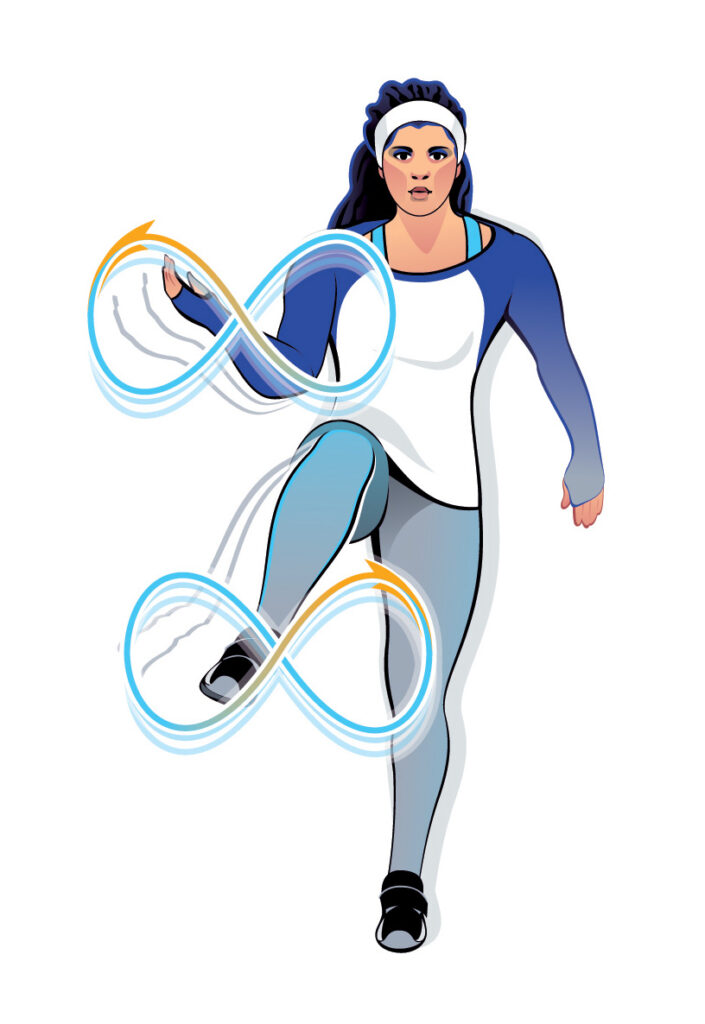
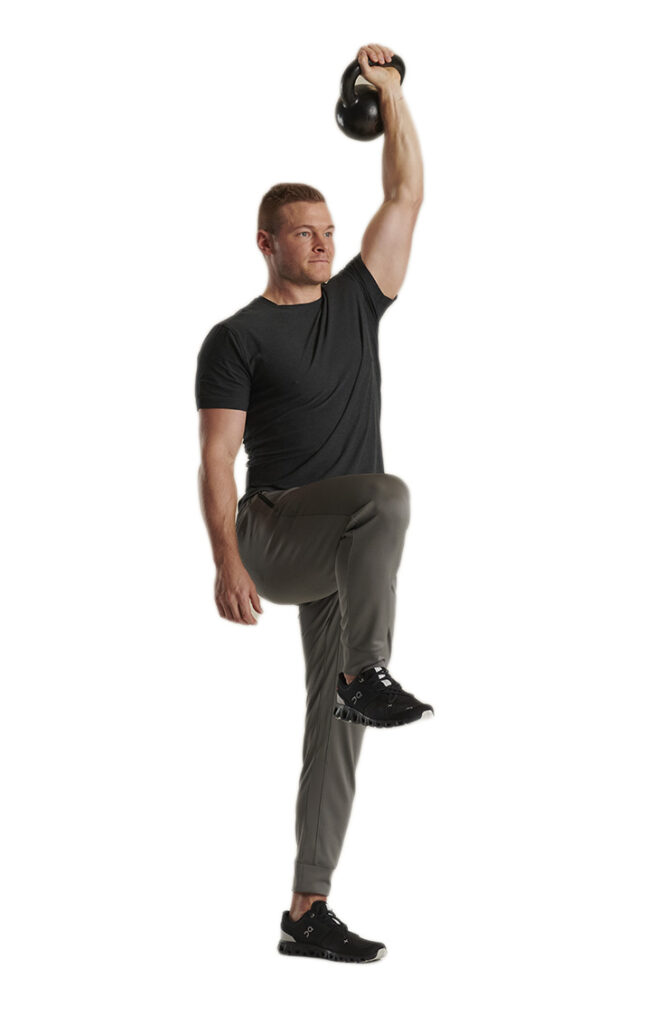
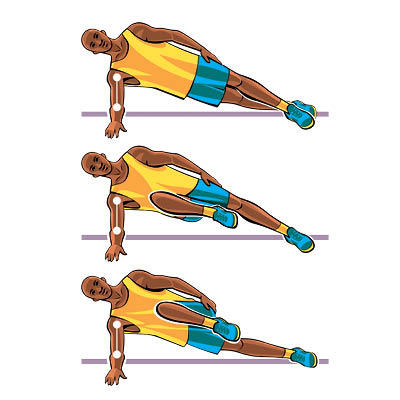
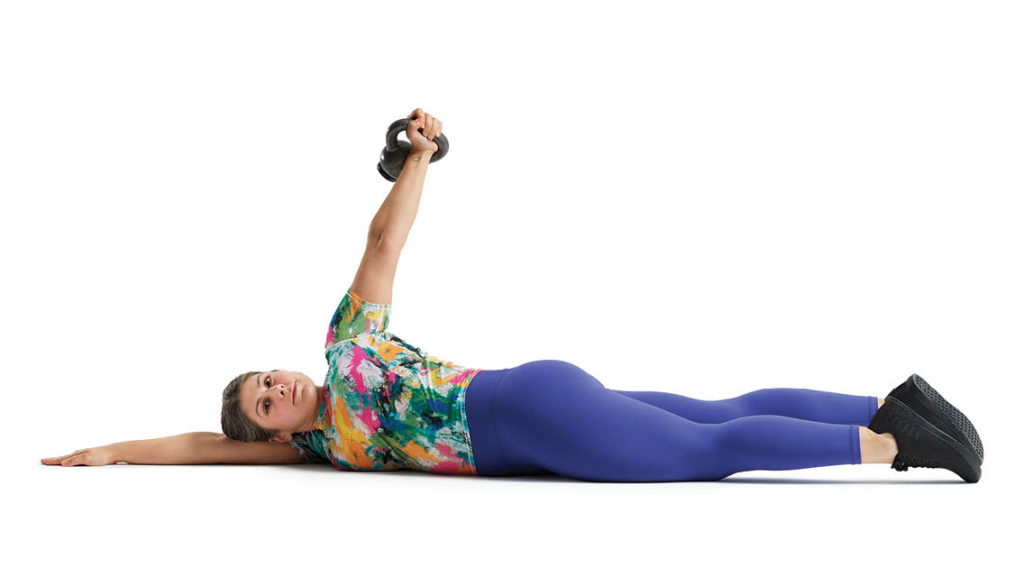
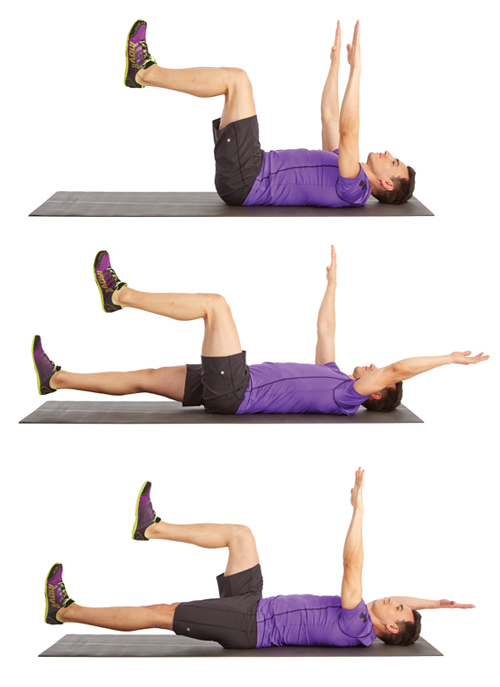

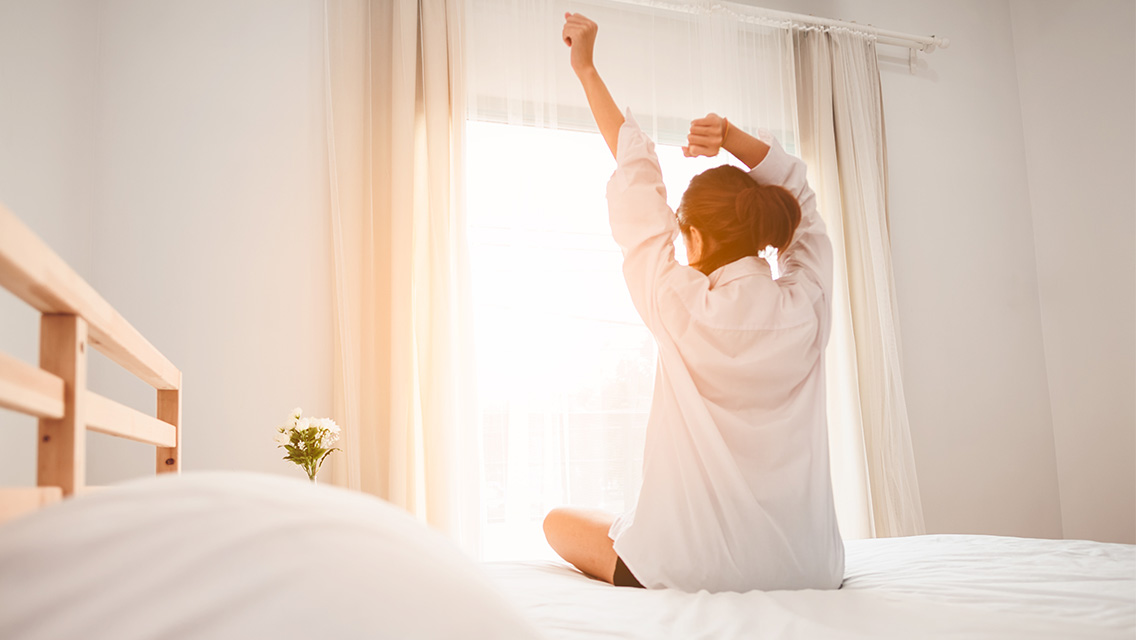
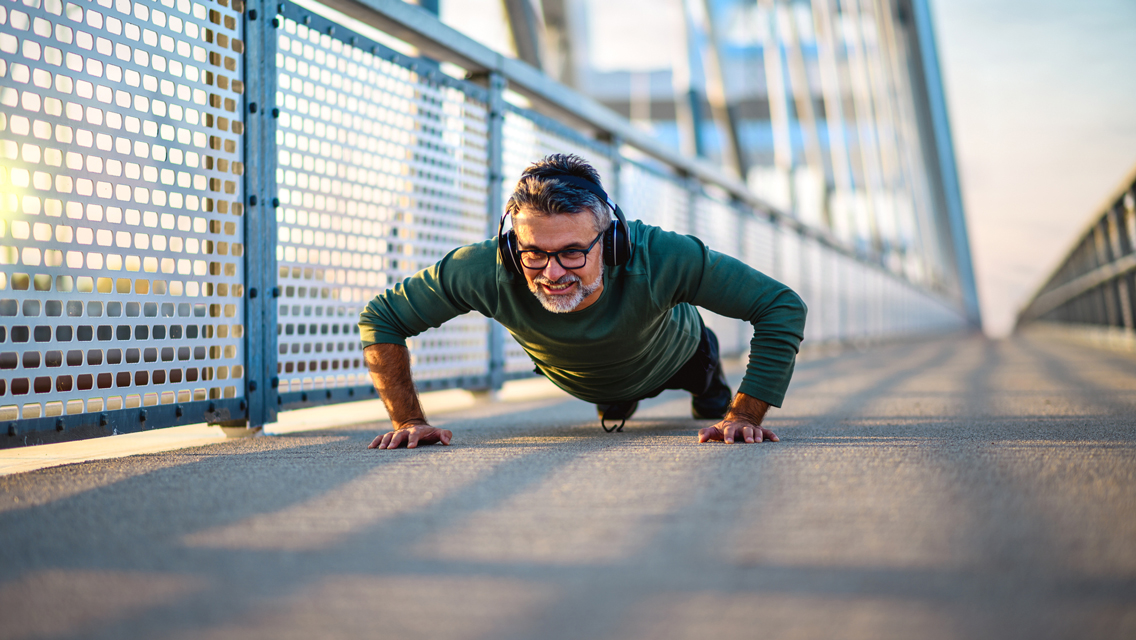

This Post Has 0 Comments